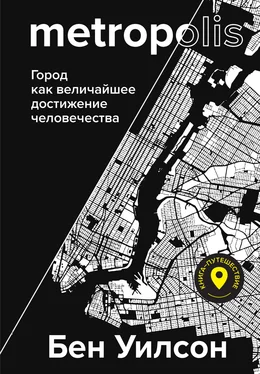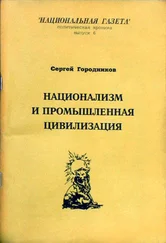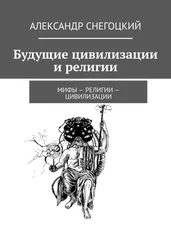Англ. treeconomics.
Cities and Biological Diversity, pp. 26, 28; Amy Fleming, ‘The Importance of Urban Forests: why money really does grow on trees’, Guardian, 12/10/2016; International Energy Agency, The Future of Cooling: opportunities for energy-efficient air conditioning (Paris, 2018).
Andrew J. Hamilton et al., ‘Give Peas a Chance? Urban agriculture in developing countries. A review’, Agronomy, 34:1 (January 2014), 54ff.
Food and Agriculture Organisation of the United Nations, FAO Statistical Yearbook 2012 (Rome, 2012), p. 214; Francesco Orsini et al., ‘Urban Agriculture in the Developing World: a review’, Agronomy for Sustainable Development 33:4 (2013), 700.
399 кв. километров.
Toni Kan, The Carnivorous City (Abuja, 2016), p. 34.
David Pilling, ‘Nigerian Economy: why Lagos works’, Financial Times, 24/3/2018; Robert Draper, ‘How Lagos Has Become Africa’s Boom Town’, National Geographic (January 2015); ‘Lagos Shows How a City Can Recover From a Deep, Deep Pit: Rem Koolhaas talks to Kunlé Adeyemi’, Guardian, 26/2/2016; ‘Lagos: the next Silicon Valley’, The Business Year, https://www.thebusinessyear.com/nigeria-2018/nurturing-entrepreneurs/interview; Oladeinde Olawoyin, ‘Surviving the Inner Recesses of a Lagos Danfo Bus’, Premium Times, 17/2/2018.
Saskia Sassen, The Global City: New York, London, Tokyo (Princeton, 2001).
Economic Intelligence Unit, Ministry of Economic Planning and Budget, ‘The Socio-Economic Costs of Traffic Congestion in Lagos’, Working Paper Series, 2 (July 2013), 7.
A. T. Kearney, Digital Payments and the Global Informal Economy (2018), pp. 6, 7; Ifeoluwa Adediran, ‘Mixed Feelings for Lagos Danfo Drivers as Phase-Out Date Approaches’, Premium Times, 15/9/2018.
Guardian (Nigeria), 16/7/2017.
Victor Asemota, ‘Otigba: the experiment that grew into a tech market’, Guardian (Nigeria), 15/3/2017.
Jack Sullivan, ‘Trash or Treasure: global trade and the accumulation of e-waste in Lagos, Nigeria’, Africa Today, 61:1 (Fall 2014), 89–112.
T. C. Nzeadibe and H. C. Iwuoha, ‘Informal waste recycling in Lagos, Nigeria’, Communications in Waste & Resource Management 9:1 (2008), 24–30.
‘Lapido Market and Audacity of Anarchy’, Guardian (Nigeria), 24/5/2019; Tope Templer Olaiya, ‘Fear Grips Danfo Drivers Ahead of Proposed Ban’, Guardian (Nigeria), 20/2/2017.
Adediran; Ifeanyi Ndiomewese, ‘Ethnic Bias and Power Tussle Surround Appointment of New Leadership in Computer Village, Ikeja’, Techpoint Africa, 13/5/2019 https://techpoint.africa/2019/05/13/computer-village-iyaloja/.
Раздел географии, опирающийся на описание выдающихся черт местности.
Manish Chalana and Jeffrey Hou (eds.), Messy Urbanism: understanding the ‘other’ cities of Asia (Hong Kong, 2016); Rahul Srivastava and Matias Echanove, ‘What Tokyo Can Teach Us About Local Development’, The Hindu , 16/2/2019.
Matias Echanove, ‘The Tokyo Model: incremental urban development in the post-war city’ (2015), http://www.urbanlab.org/TheTokyoModel-Echanove.02.2015.pdf; Ken Tadashi Oshima, ‘Shinjuku: messy urbanism at the metabolic crossroads’, in Chalana and Hou (eds.), pp. 101ff.
Kisho Kurokawa, New Wave in Japanese Architecture (London, 1993), p. 11.
Oshima; Jan Vranovský, Collective Face of the City: application of information theory to urban behaviour of Tokyo (Tokyo, 2016); Zhongjie Lin, Kenzo Tange and the Metabolist Movement: urban utopias of modern Japan (Abingdon, 2010).
Echanove (2015); Matias Echanove and Rahul Srivastava, ‘When Tokyo Was a Slum’, Nextcity.org, 1/8/2013, https://nextcity.org/informalcity/entry/when-tokyo-was-a-slum; Matias Echanove and Rahul Srivastava, The Slum Outside: elusive Dharavi (Moscow, 2013).
Chinmoy Sarkar, Chris Webster and John Gallacher, ‘Association Between Adiposity Outcomes and Residential Density: a full-data, cross sectional analysis of 419562 UK Biobank adult participants’, Lancet Planetary Health, 1 (October 2017); ‘Inner-City Living Makes for Healthier, Happier People, Study Finds’, Guardian, 6/10/2017.
Devajyoti Deka, ‘Are Millennials Moving to More Urbanized and Transit-Oriented Counties?’, Journal of Transport and Land Use, 11:1 (2018), 443–61; Leigh Gallagher, The End of the Suburbs: where the American dream is moving (NY, 2013); Ellen Dunham-Jones and June Williamson, Retrofitting Suburbia: urban design solutions for resigning suburbs (Hoboken, 2009).
Vanit Mukhija and Anastasia Loukaitou-Sideris (eds.), The Informal American City: from taco trucks to day labour (Cambridge, MA, 2014); Jake Wegmann, ‘The Hidden Cityscapes of Informal Housing in Suburban Los Angeles and the Paradox of Horizontal Density’, Building’s Landscapes: Journal of the Vernacular Architecture Forum 22:2 (Fall 2015), 89–110; Michael Mendez, ‘Latino New Urbanism: building on cultural preferences’, Opolis: An International Journal of Suburban and Metropolitan Studies (Winter 2005), 33–48; Christopher Hawthorne, ‘“Latino Urbanism” Influences a Los Angeles in Flux’, Los Angeles Times , 6/12/2014; Henry Grabar, ‘Los Angeles Renaissance: why the rise of street vending reveals a city transformed’, Salon.com, 18/1/2015, https://www.salon.com/2015/01/18/los_angeles_food_truck_renaissance_why_the_rise_of_street_vending_reveals_a_city_transformed/; Clara Irzábal, ‘Beyond “Latino New Urbanism”: advocating ethnurbanisms’, Journal of Urbanism , 5:2–3 (2012); James Rojas, ‘Latino Urbanism in Los Angeles: a model for urban improvisation and reinvention’ in Jeffrey Hou (ed.), Insurgent Public Space: guerrilla urbanism and the remaking of contemporary cities (Abingdon, 2010), pp. 36ff.
Конец ознакомительного отрывка
Купить книгу











